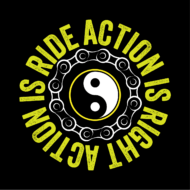“The fundamental thing is that you can’t escape the attention economy.”
– Michael Goldhaber
So as I was snowshoeing around my backyard, writing this post in my head, I had a good chuckle at myself. I could tell, just outlining it, that it was going to be a long post and that meant automatically in this era a certain chunk of people wouldn’t read it.
This is not meant as a slight against those folks. They feel like they don’t have the time to read it. Or that’s what they’ve been led to believe. Or that’s how their brains have been conditioned. I know, because I was there too.
To begin, a bit of context. Let me speak to how I’m currently consuming my media – or what also passes for reading online these days.
I currently use an RSS/feed reader, News Explorer, wherein I’ve got a bunch of site subscriptions. For the most part, they’re old-school single-person blogs, but there’s also a few literary and essay sites in there. I used to have mass-media news sites, but it just got so ridiculously out of hand in terms of post quantity every day so those got axed. All told I’ve got about 40 sites I’m subscribed to. On any given day, I’ll get from 25-50 new articles that show up, depending. I have the app on both my desktop and my phone so it syncs and I can ‘favorite’ things to read later. Once or twice a day I’ll go through and check out what’s there, favorite stuff to read later. Anything friends or people I’ve actually engaged with in-person or via email is an automatic read. Sometimes I’ll stop and read a whole article if I’m feeling like it. Often, all these articles have links to articles within them as well that sound interesting too. I’ll sometimes click through and open those up in Safari, and if I want to circle back, I bookmark them to a folder I’ve got there called ‘Junk Drawer/Read Later’.
Lately I’ve also been using ReadUp, and in a similar fashion, I can go through that and ‘star’ articles that I think seem interesting for later reading. These articles too, often contain links to further articles that could be of interest. See the note about Safari above. I also have friends and contacts that will send me links, and links that are in some ways work-related that I’ll get via email newsletters or via work social-media accounts.
I don’t have any personal social media accounts, so I don’t get any links there, but even still, given all the above, I can easily rack up a ‘to read’ list of anywhere from 150-200 articles within any given day. That’s a lot – if not impossible – to keep up with. Which is why I don’t.
There are certain sources I read everything from, regardless, but for the most part in the interest of sanity, I realized the best way to manage it was just to let it all go. I do read a few articles each day, but every day or two, I go through and nuke all those links/articles I’ve saved/favorited. I don’t have time to read the whole Internet – there’s far more there than I could ever get to and I’m ok with that. Still, sometimes weird things happen and stuff that is meant to find you, will.
This is the system I’ve developed to help me ‘pay attention to what I pay attention to’ when it comes to the Internet.
About a week ago, I’d marked this article from the New York Times Opinion section, ‘I Talked to the Cassandra of the Internet Age‘ by Charlie Warzel as a ‘to read’, but at some point, it got culled. But really, the Internet is just 6 degrees of Kevin Bacon when it comes to links.
Two days ago I read an article on ReadUp (it made the cut) and it left enough of an impression that I wrote a post about it. As a rare treat, the woman who wrote it, Lisa Richardson, actually read my post and emailed me and we had a lovely exchange. At the end of her first email, she shared a link she had just read that morning and thought I’d appreciate…wait for it – I Talked to the Cassandra of the Internet Age. I remembered it immediately and told her so. Surely the Universe had sent me a sign.
You should definitely go read the whole article, I won’t spoil it, but the TL;DR (if you’re paying attention, you’ll get that joke) is that years ago – in prehistoric times internet-wise – 1997, physicist Michael Goldhaber wrote an essay in Wired magazine outlining almost to the letter, all the issues we’re struggling with now with regards to the pitfalls of the ‘attention economy’. Thing is, not many folks paid attention back then. Upon reading, it kinda makes me wonder who we’re not paying attention to right now.
Most of this came to him in the mid-1980s, when Mr. Goldhaber, a former theoretical physicist, had a revelation. He was obsessed at the time with what he felt was an information glut — that there was simply more access to news, opinion and forms of entertainment than one could handle. His epiphany was this: One of the most finite resources in the world is human attention. To describe its scarcity, he latched onto what was then an obscure term, coined by a psychologist, Herbert A. Simon: “the attention economy.”
These days, the term is a catch-all for the internet and the broader landscape of information and entertainment. Advertising is part of the attention economy. So are journalism and politics and the streaming business and all the social media platforms. But for Mr. Goldhaber, the term was a bit less theoretical: Every single action we take — calling our grandparents, cleaning up the kitchen or, today, scrolling through our phones — is a transaction. We are taking what precious little attention we have and diverting it toward something. This is a zero-sum proposition, he realized. When you pay attention to one thing, you ignore something else.
– Charlie Warzel, The New York Times
After reading the article, I wrote back to Ms. Richardson, conveyed my story, thanked her and also mentioned that it immediately reminded me of a post I’d written a little over 2 years ago, Using My Attention with Intention.
I’d noticed my own tendency to read only shorter pieces, avoidance of long articles, and deteriorating attention span. Though I’ve been attempting to rehabilitate my reading skills, I’ll ironically point out that old habits die hard. In the case of the article I discuss below, I read it 3 times. The first two I would resort to skimming, looking for hooks and trying to get to the end so I could get on to ‘next thing’. Part of my efforts have been working on stopping, slowing down, and staying with the writing. Too often these days we are in a hurry to ‘get elsewhere’ either virtually or physically and don’t pay attention to the one thing we are actually doing.
– Me, February 2019 – I seem to think about this stuff a lot in February.
The good news is, looking back, over the past 2 years I have been very successful in my endeavor to use my ‘attention with intention‘. I’d say this is due to a number of factors. Working from home, finally jumping off social media (for good), and practicing a lot of what Cal Newport talks about in Digital Minimalism. A regular practice of meditation has been huge in this regard. Sam Harris makes this perfectly clear in his audio clip from his Waking Up app:
In his recording, “Don’t Meditate Because It’s Good for You,” Harris says that meditation is a profound life process, analogous in some ways to reading—“one of the most important skills our species ever acquired.” Meditation, like reading, has “sweeping implications” for human life, so that over time, “almost everything we care about depends on it.”
In reality, our daily working lives find ourselves “always meditating on something”— habits, worries, desires, obsessions, expectations, insights, prejudices and the like. He emphasizes: “We become what we pay attention to,” so that we are effectively changing our brains in each moment. Mindfulness is “the ability to notice this process with clarity and to then prioritize what you pay attention to.”
“Why not focus your attention on things important to you,” he asks, rather than on a host of “trivial things that clamour for it?”
– Elizabeth Shih, storytellingcommunications.ca
Here’s the audio clip, set to an animation:
We’ve come to the point – or past it – that Mr. Goldhaber wrote about in his initial WIRED article, in that our attention is now a commodity and it is being bought and sold by the likes of social media, news outlets and advertisers. Interesting that those of us talking about the ‘attention economy’ and its associated perils are pretty much relegated to using the very tools, platforms and devices at the core of the economy itself. It would seem we have no choice. However, even Mr. Goldhaber acknowledged this.
“It’s not a question of sitting by yourself and doing nothing, but instead asking, ‘How do you allocate the attention you have in more focused, intentional ways?’”
– Michael Goldhaber
It took a lot of my attention to sit and write this and compile all these quotes and links. Arguably I’m doing it to get attention – as outlined by Mr. Goldhaber in his WIRED article. We all are. We all need attention – though the amount varies by person. I guess what all this has me thinking is it possible anymore to pay attention to the right things given the state of the ‘attention economy’ today. Are we even able to accurately determine what those things are?
“Rule Number One is to pay attention. Rule Number Two might be: Attention is a limited resource, so pay attention to where you pay attention.”
– Howard Rheingold, The Virtual Community
The best part of all this, is searching out Howard Rheingold – whom Mr. Goldhaber cited in his WIRED article, I found his twitter page and therein was a link to a clip from Thelonious Monk from 1966, playing Blue Monk. If you’ve read this far, you deserve to be rewarded. Whatever you do, give at least the first 12:10 of this your full attention.






